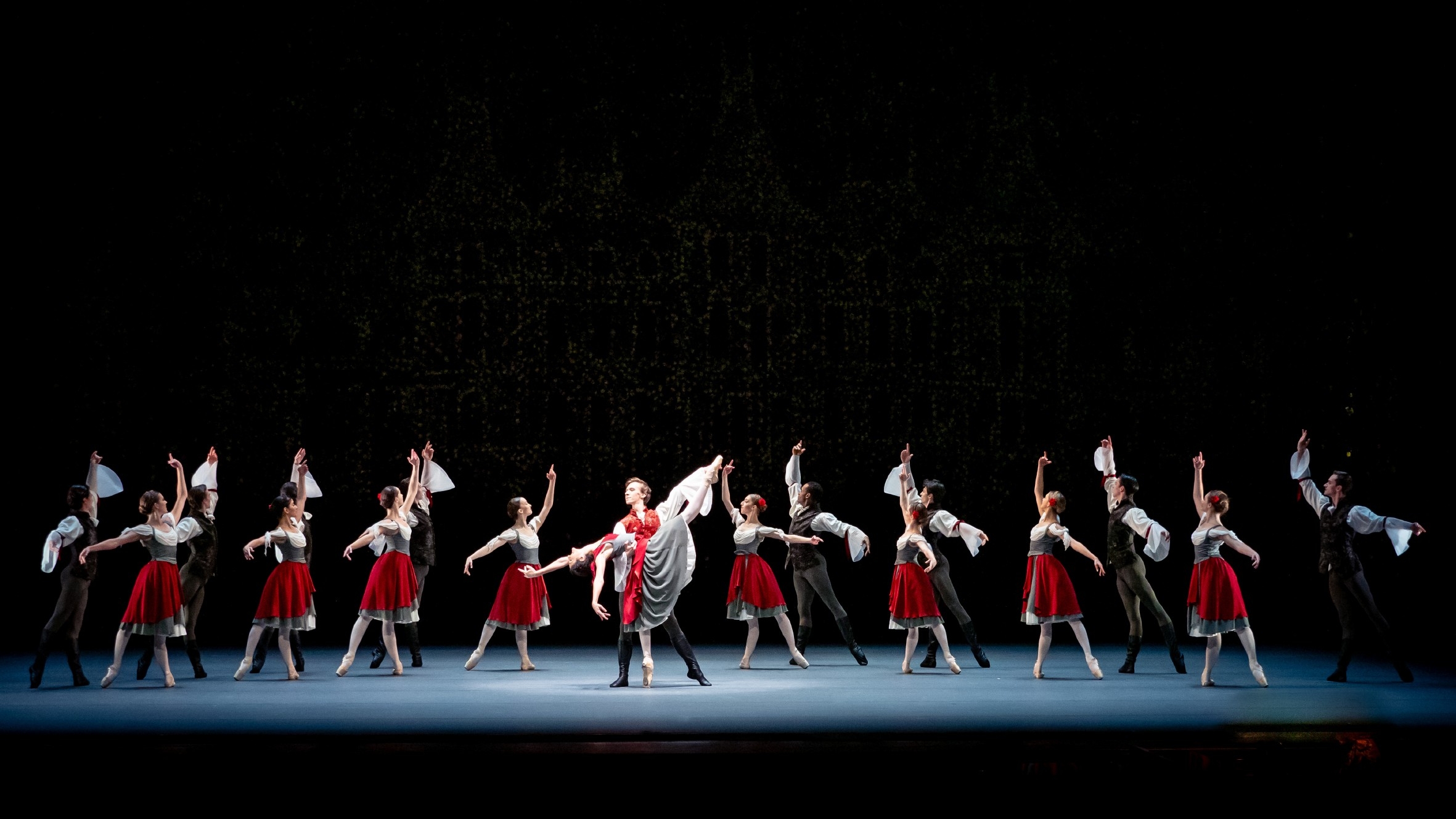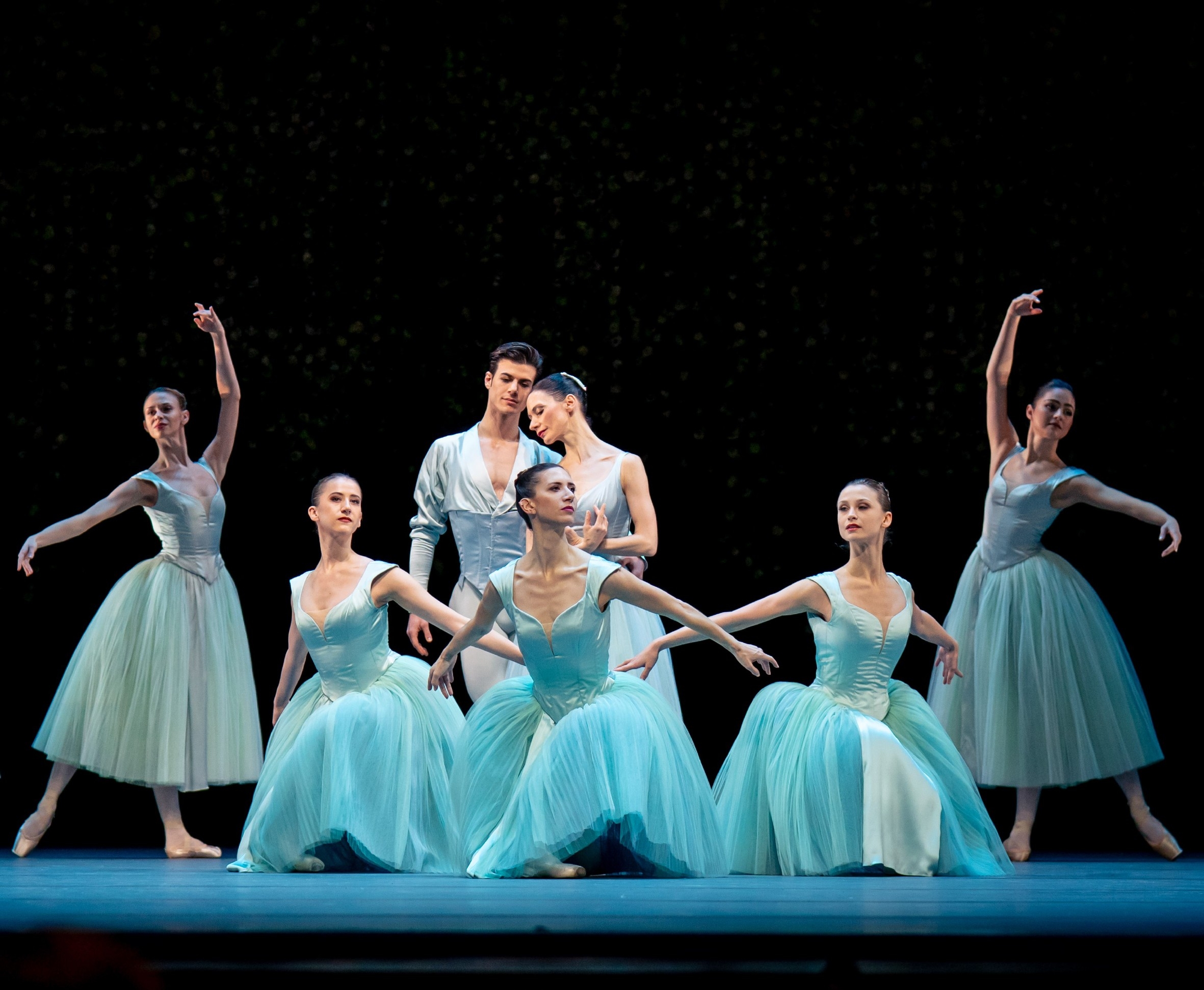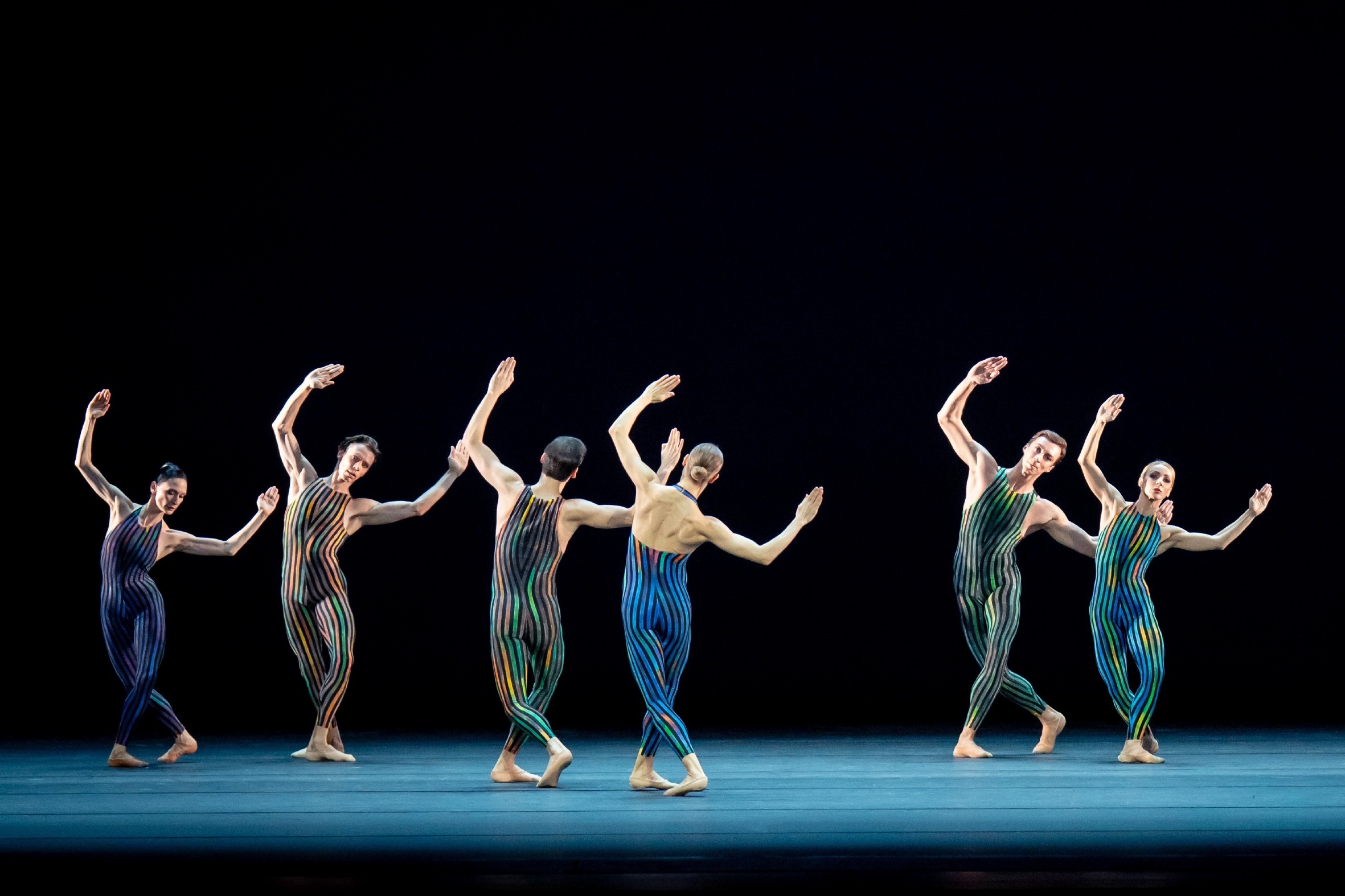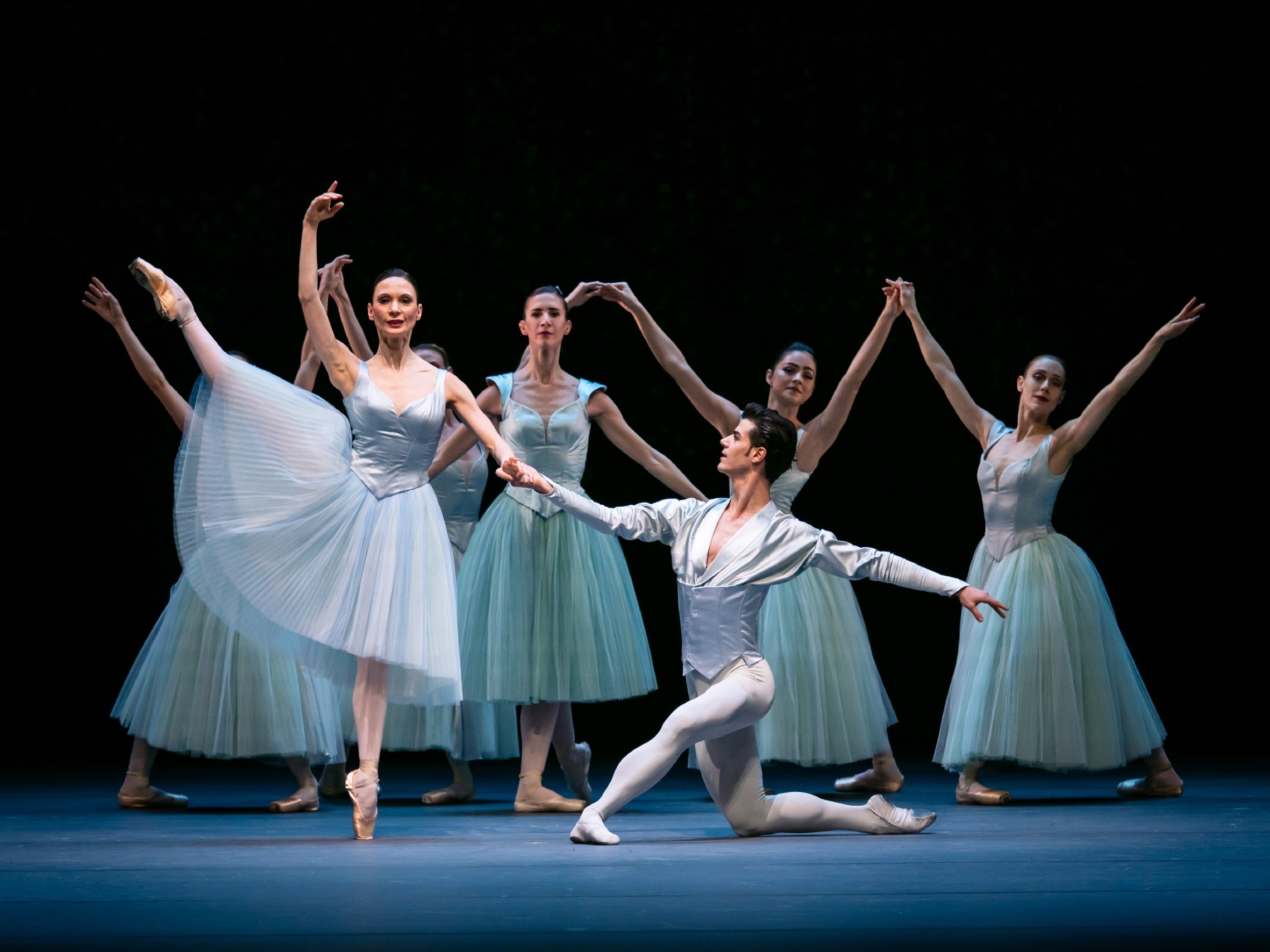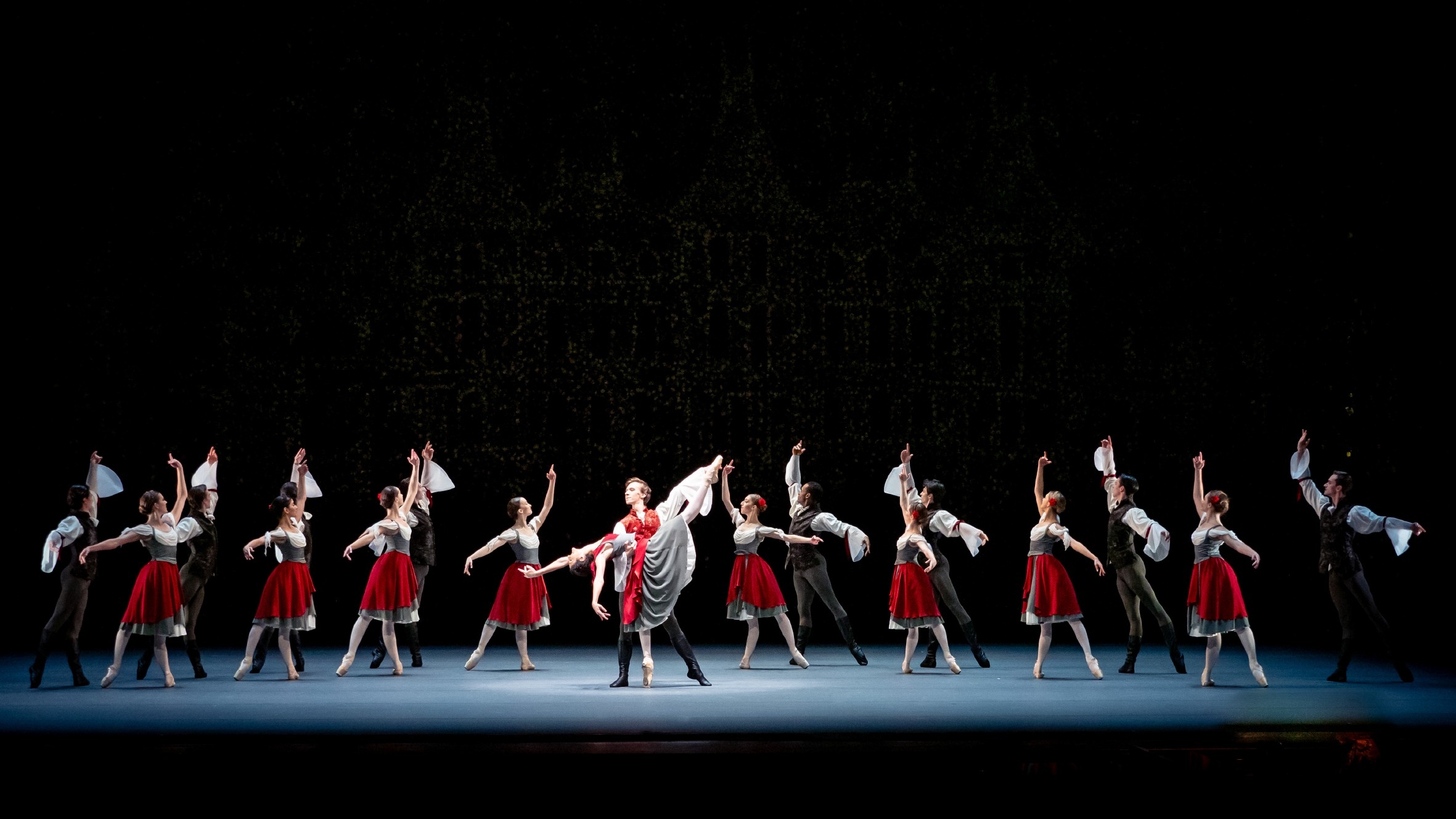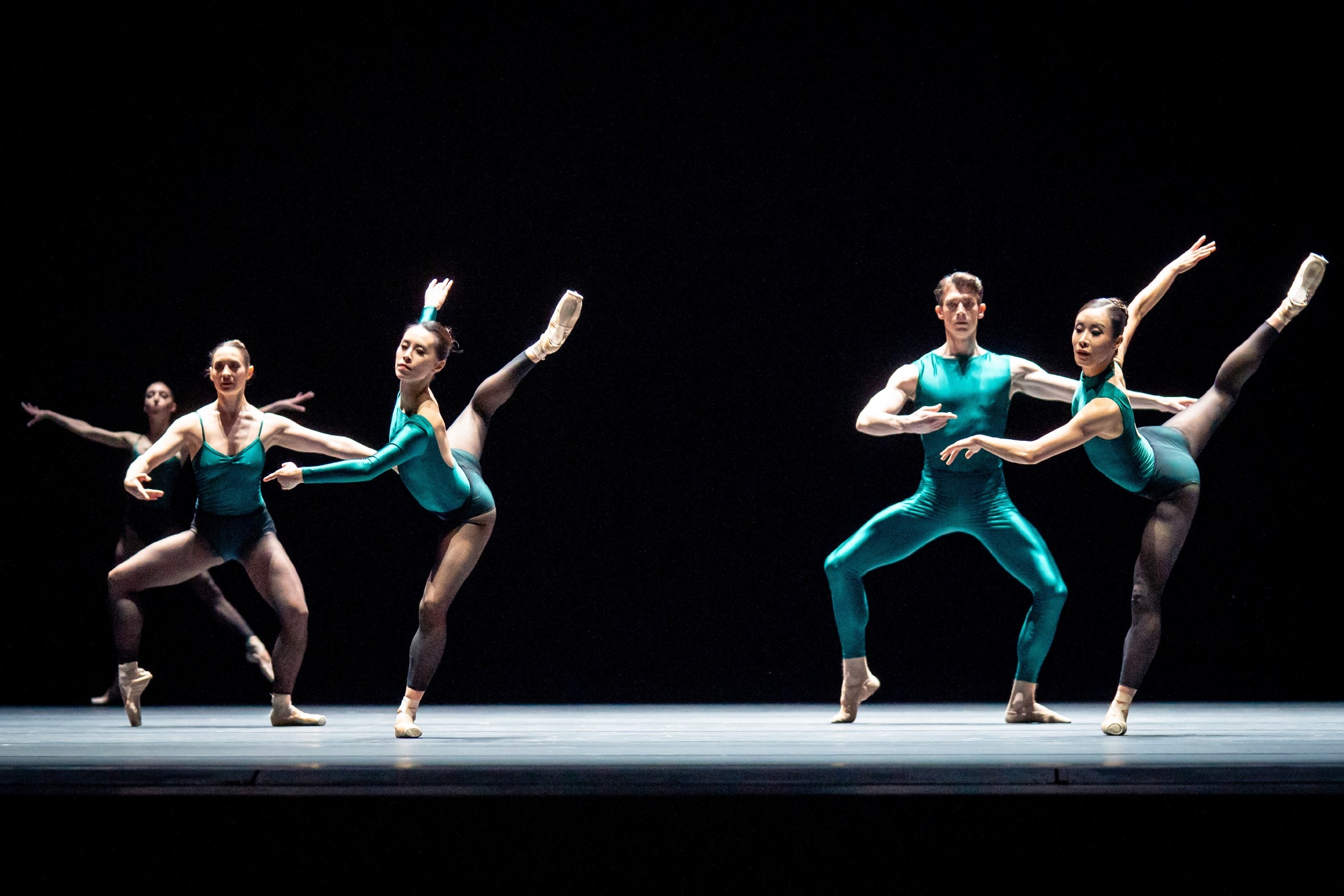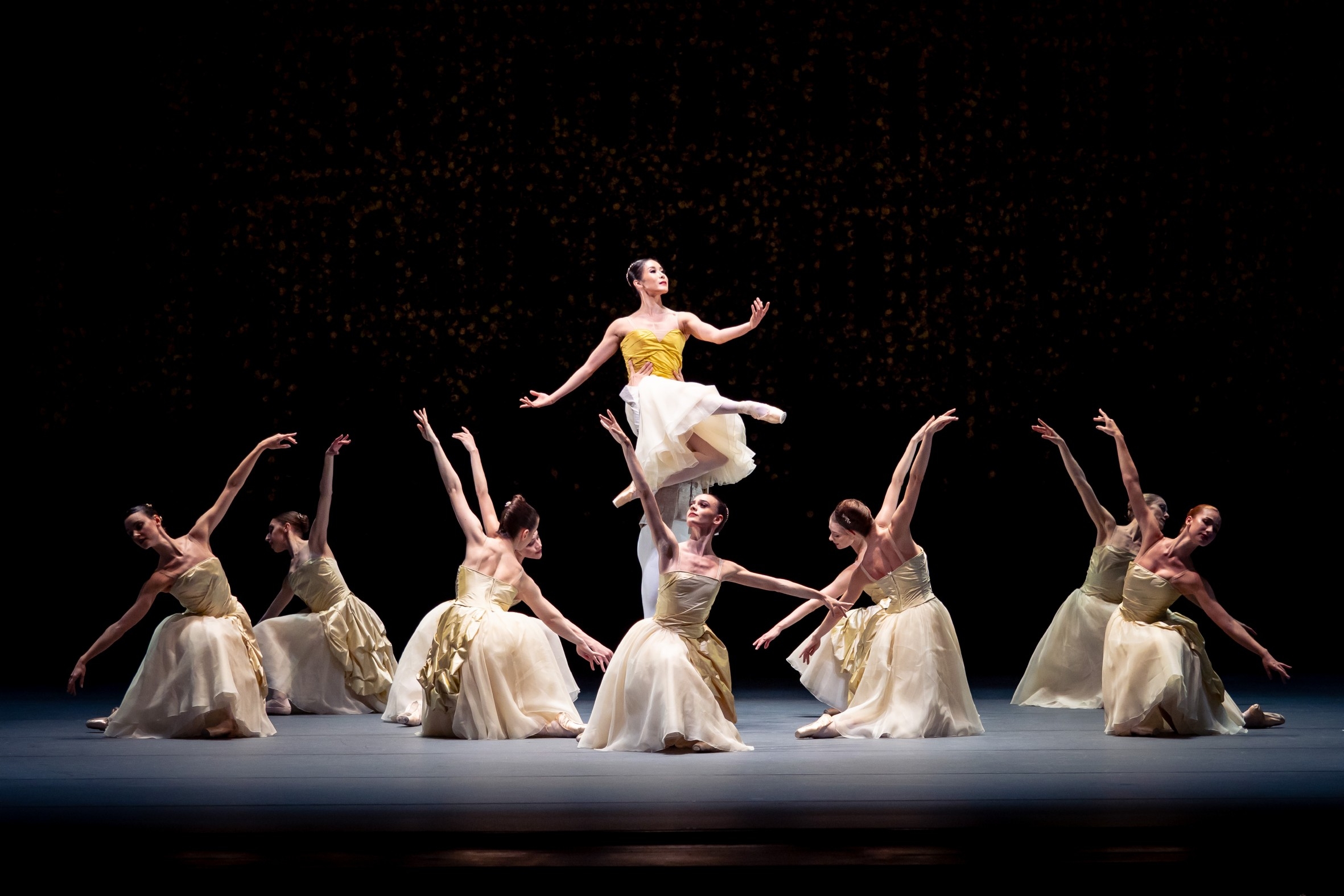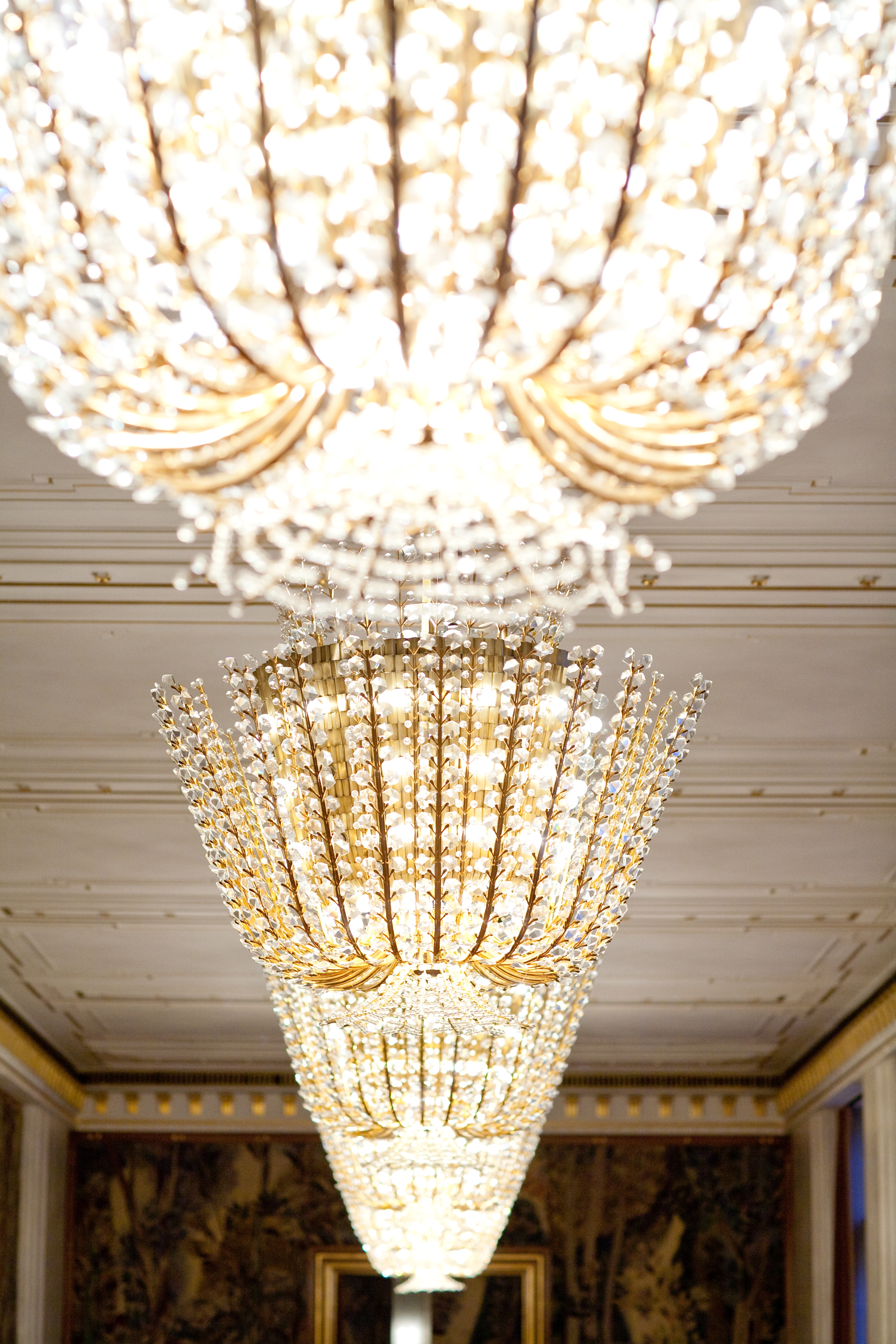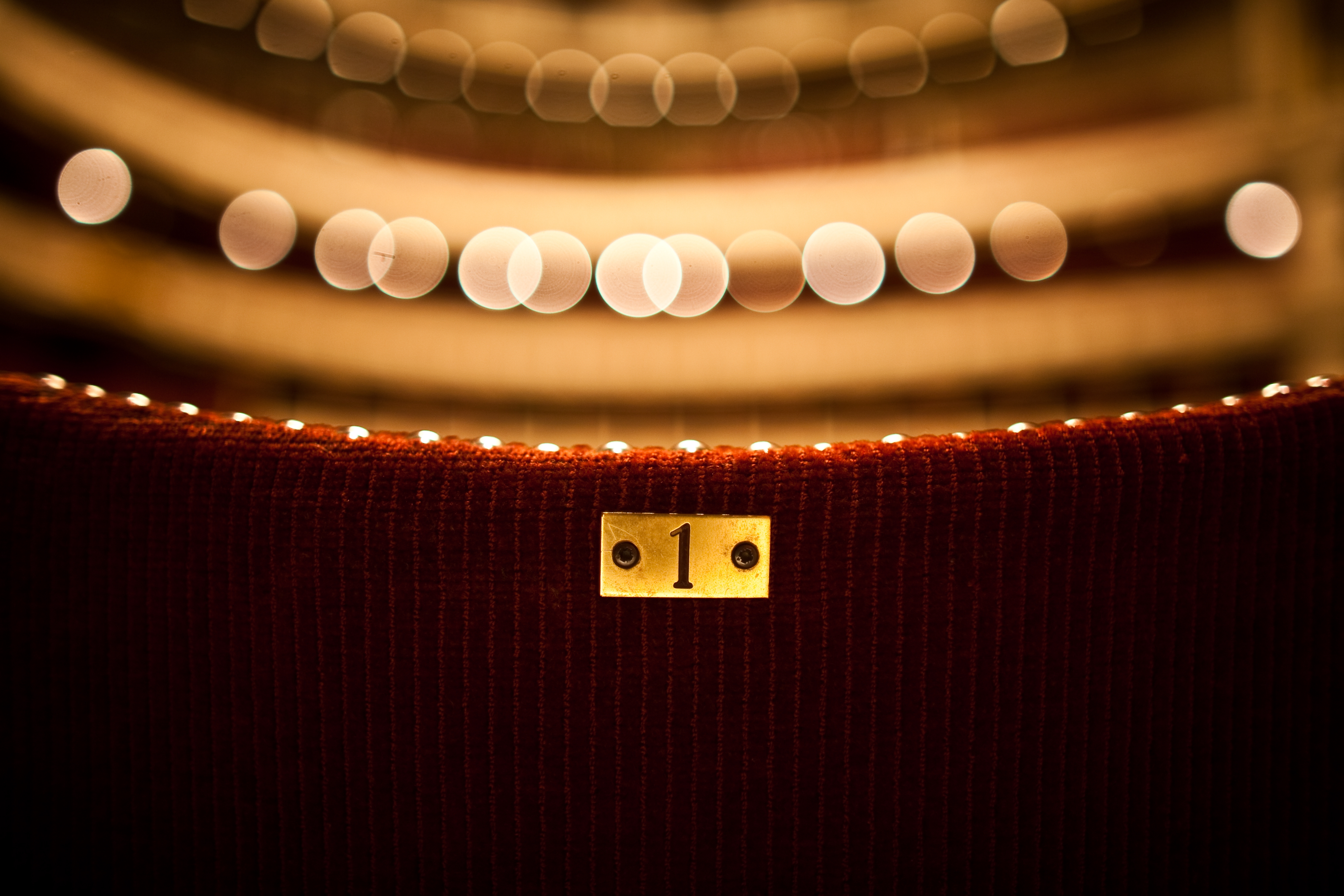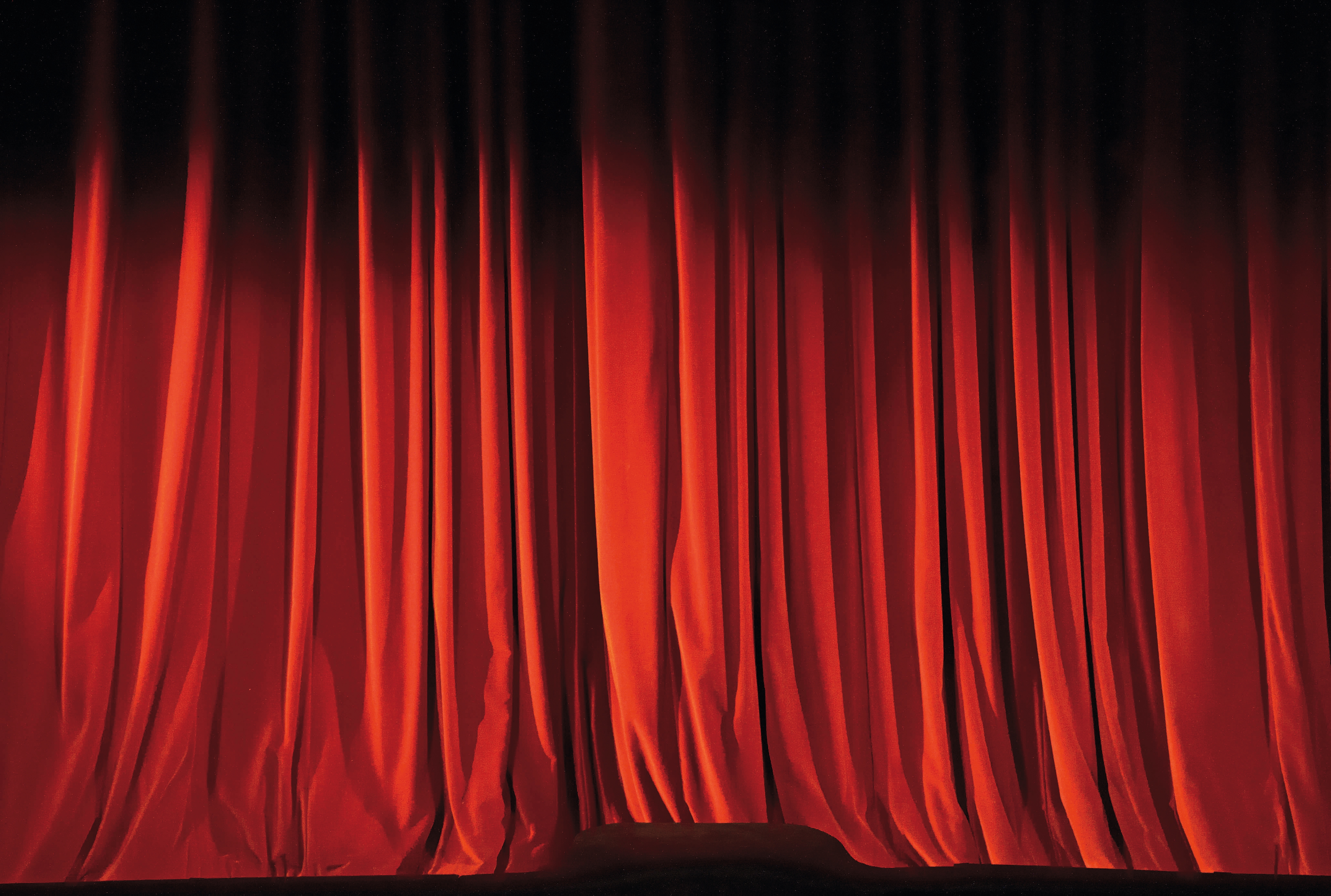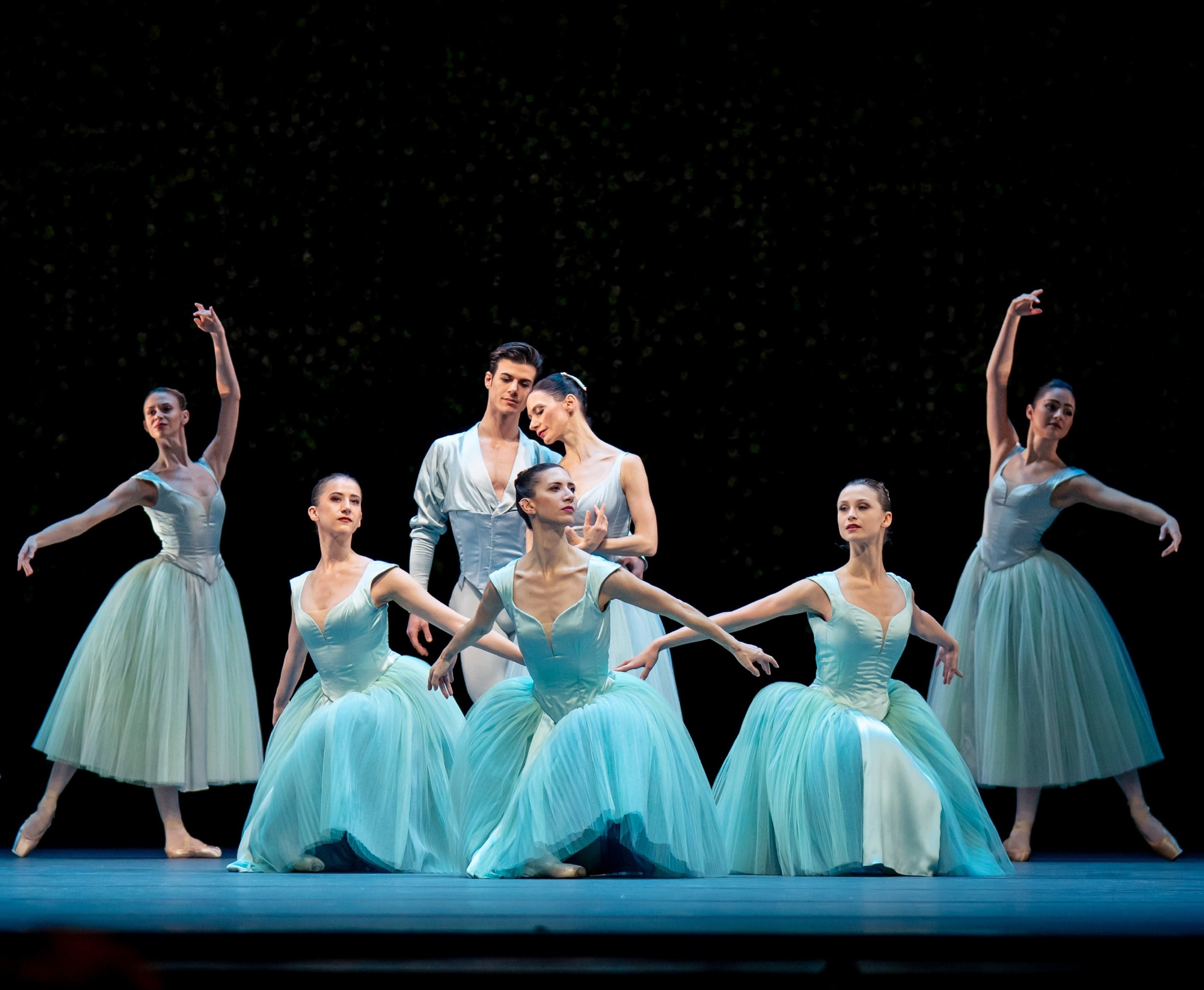
About the production
Three masters, three captivating ballets!
In Concertante Hans van Manen shows snapshots, sometimes cheerful, sometimes full of sizzling eroticism, sometimes full of aggression, always full of surprises and yet following an inner logic. With In The Middle, Somewhat Elevated William Forsythe brings classical ballet into the present with eccentric coolness and breathtaking virtuosity. George Balanchine’s dazzlingly festive ensemble work Brahms-Schoenberg Quartet is a highly musical, fascinatingly neo-classical ballet in the spirit of Marius Petipa.
Hans van Manen created Concertante in 1994 for Nederlands Dans Theater 2 to Frank Martin’s Petite Symphonie Concertante – music whose wealth of expression, dynamic rhythms and forceful character inspired him to choreograph a ballet in which eight dancers become momentarily attached to and detached from each other again like the pieces of a puzzle; at times joyfully, at times bristling with eroticism, at times filled with aggression, always full of surprises and yet following their own inner logic. Like a crime drama, complex structures within the space and strictly defined sightlines build an unresolved tension, through which the dance broadens out into an encounter between people of whom Hans van Manen said: “However close to each other you may become, ultimately you never know exactly what someone else is thinking.”
“Originally created for the Paris Opera Ballet, In the Middle, Somewhat Elevated is a theme and variations in the strictest sense”, writes William Forsythe about his work, commissioned by Rudolf Nureyev in 1987 and set to the powerful, stomping electronic sounds of his long-term artistic partner Thom Willems. “Making use of academic virtuosity, it extends and accelerates these traditional figures of classical ballet. By shifting the alignment of positions and the emphasis of transitions, the enchainments begin to tilt obliquely and receive an unexpected drive that makes them appear at odds with their own origins”, says the choreographer. With In the Middle, Somewhat Elevated, a work by William Forsythe that fundamentally revolutionised ballet, joins the Viennese repertoire for the first time.
George Balanchine adopted a suggestion from Igor Stravinsky’s assistant Robert Craft to take on the Piano Quartet in G minor op. 25 in the sumptuous orchestral version that Arnold Schönberg arranged from Johannes Brahms’ composition in 1937 and proudly claimed as his “Fifth Symphony” when he was looking for a large-scale work for his new venue – the New York State Theater – in 1964. The Brahms-Schoenberg Quartet eventually received its world premiere in 1966 – not only to celebrate the magnificent proportions of the Lincoln Center stage, but also as a homage to an incomparable company that appeared in a 55-strong ensemble whose different qualities were displayed in four miniature ballets to match the movements of the composition: full of elegance in the Allegro, full of romanticism and lyricism in the two central movements, and exhibiting an intoxicating virtuosity in the »alla Zingarese« finale with its elements of folk dance. Brahms-Schoenberg Quartet is not one of Balanchine’s experimental works: it is a thrilling celebration of dance and the orchestra, suffused with echoes of a grand Austro-Hungarian musical tradition that is heard through Brahms and Schönberg as well as reminders of the marvelous divertissements of Marius Petipa, where the roots of Balanchine’s neoclassicism originated.
“Choreography is a language. It is like an alphabet, and you do not need to spell words that you already know. The meaning of a language is determined by the context in which it appears. The most important is how you speak this language, and not what you say.” What William Forsythe says here about choreography articulates a view of dance that applies not only to his own works, but is equally valid for artists such as Hans van Manen and George Balanchine. The American presents himself along with them in the premiere of the Vienna State Ballet’s Shifting Symmetries – a triple bill of three master works linked by the common factor that their creators have each confronted ballet as an art from in a way that is both rigorous and thrilling.
